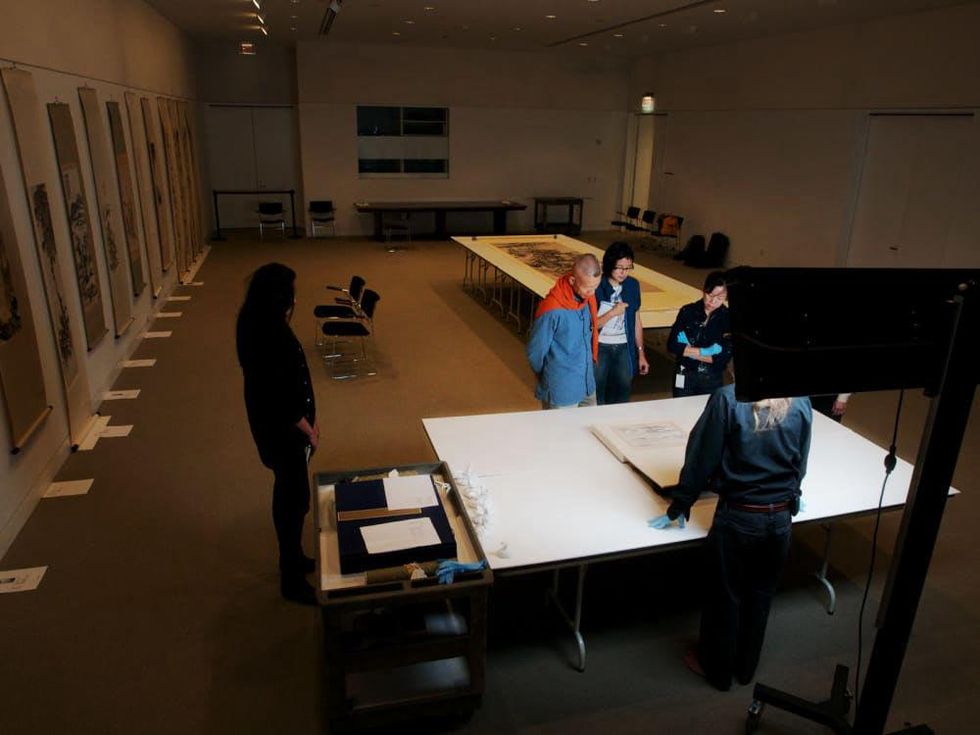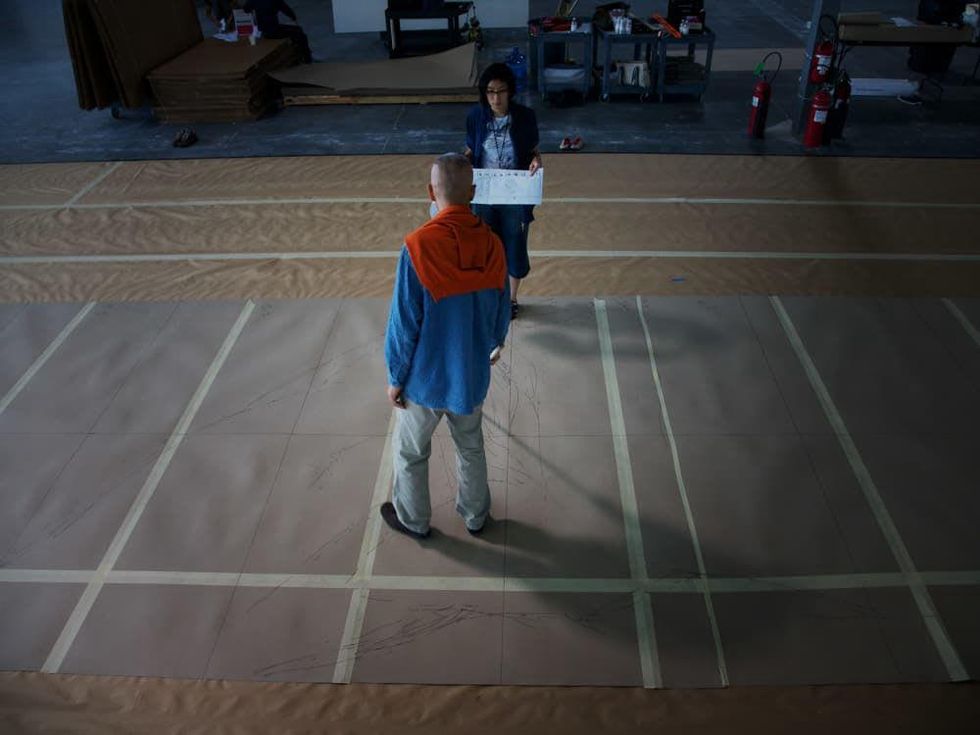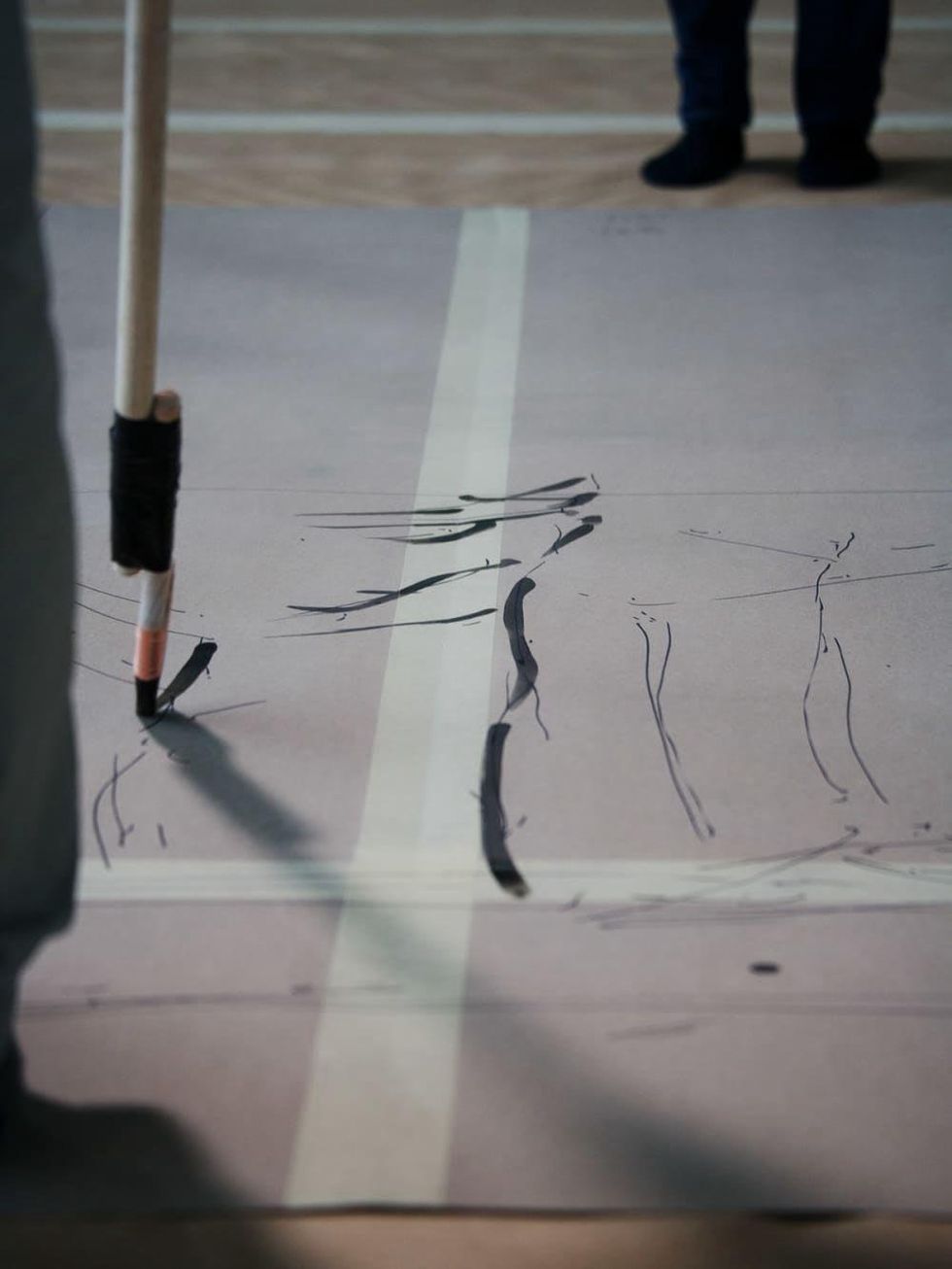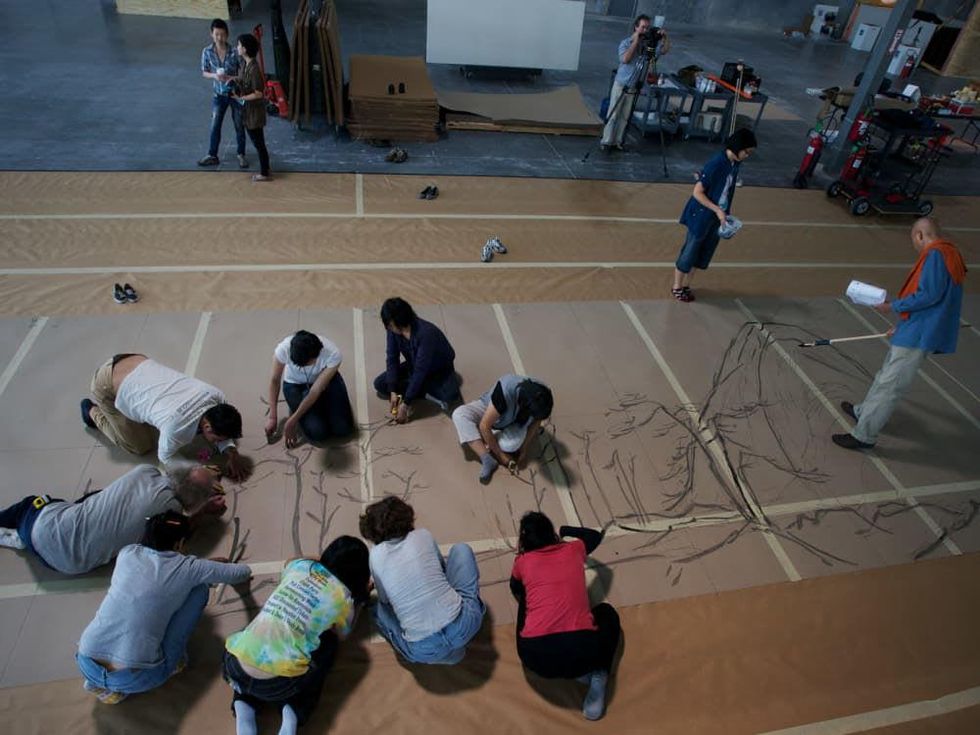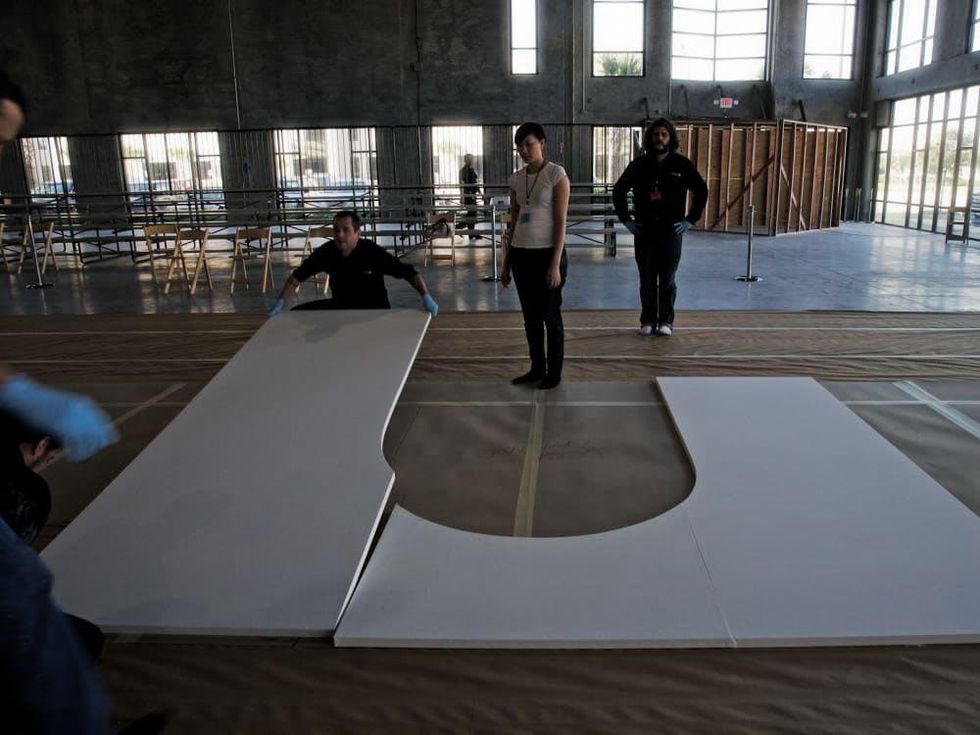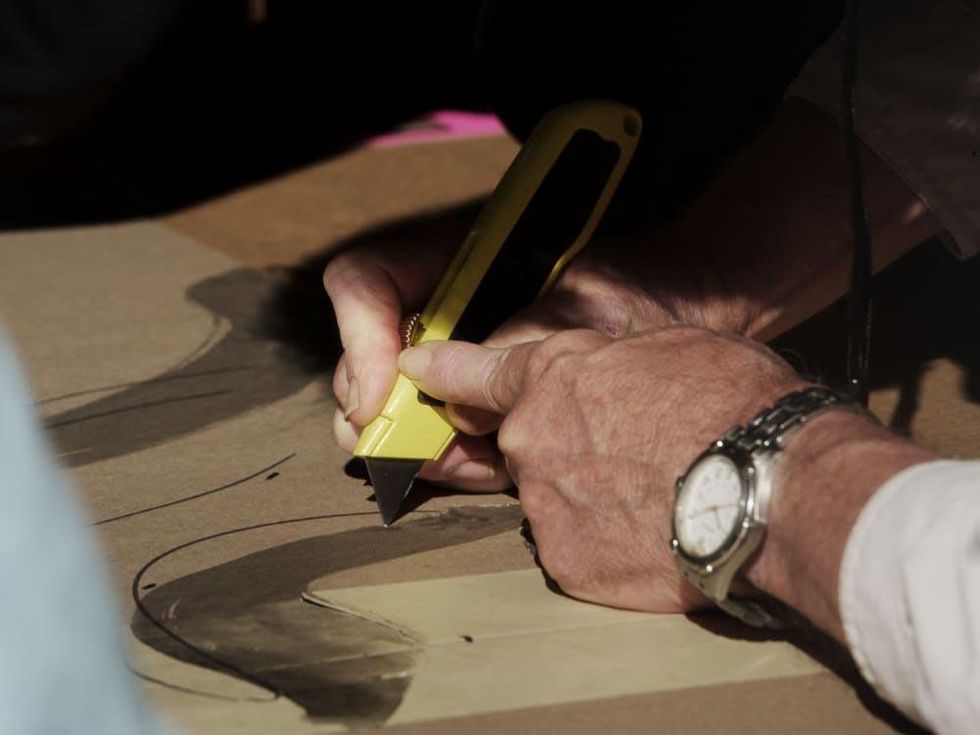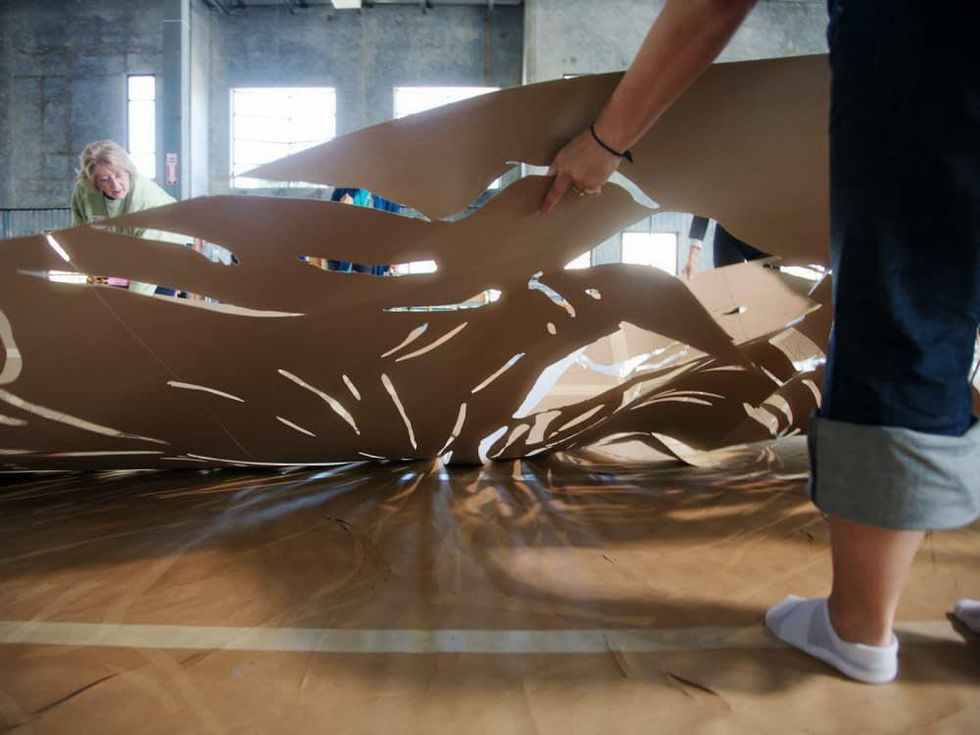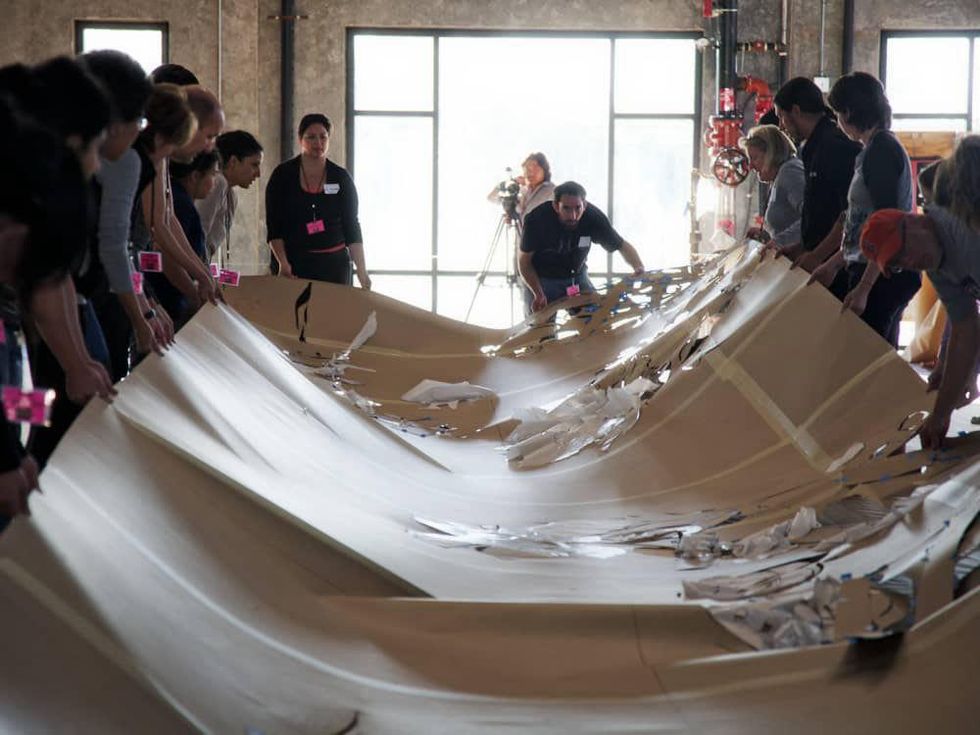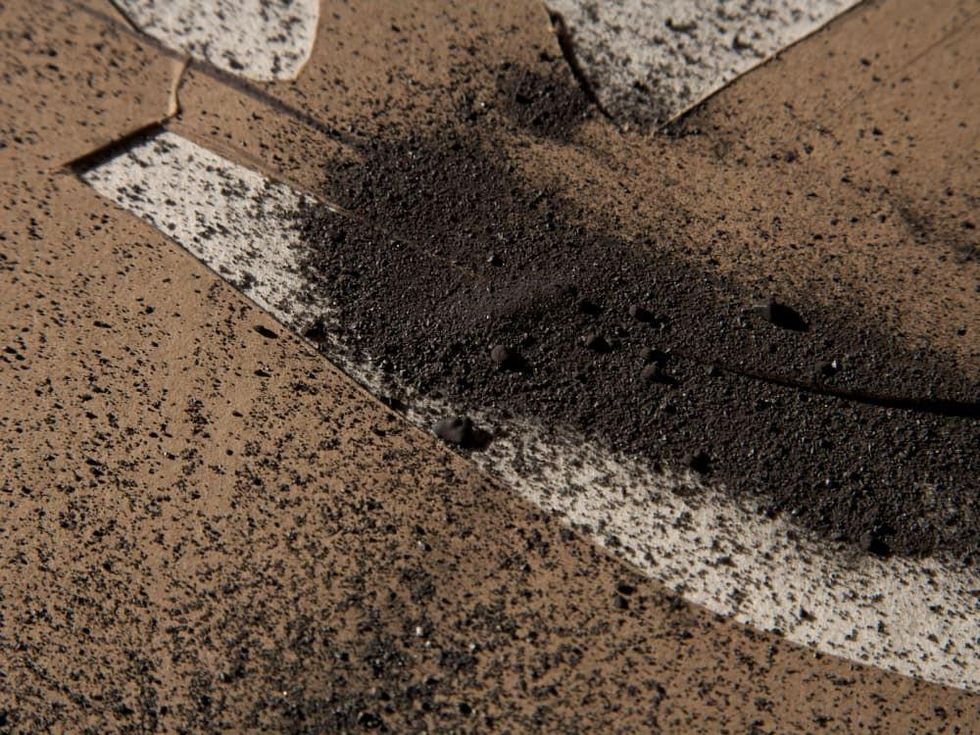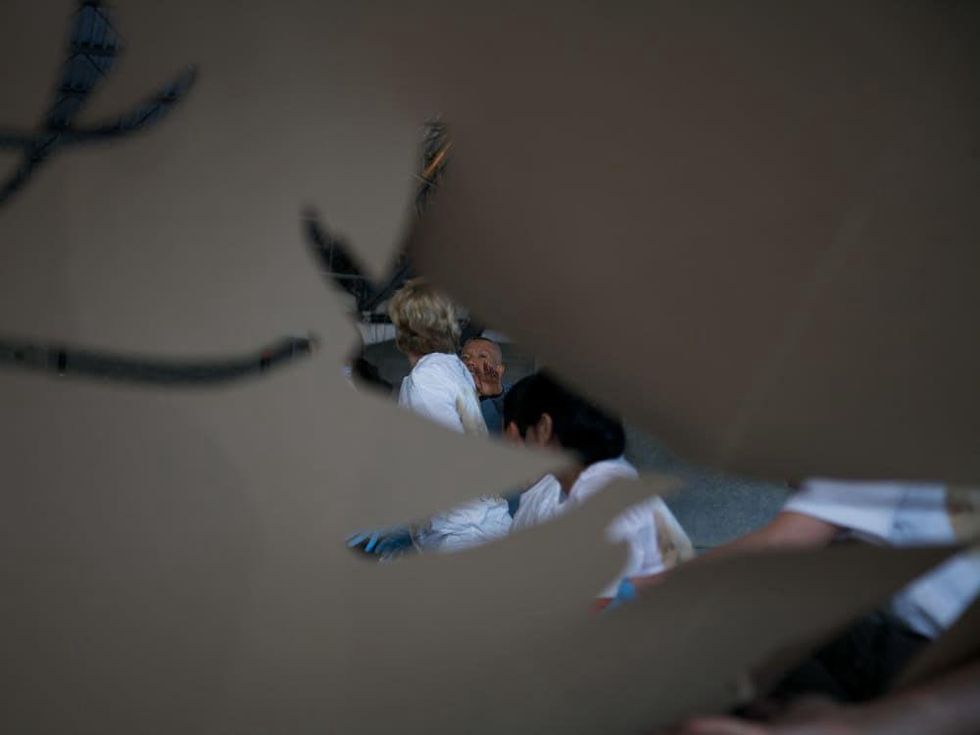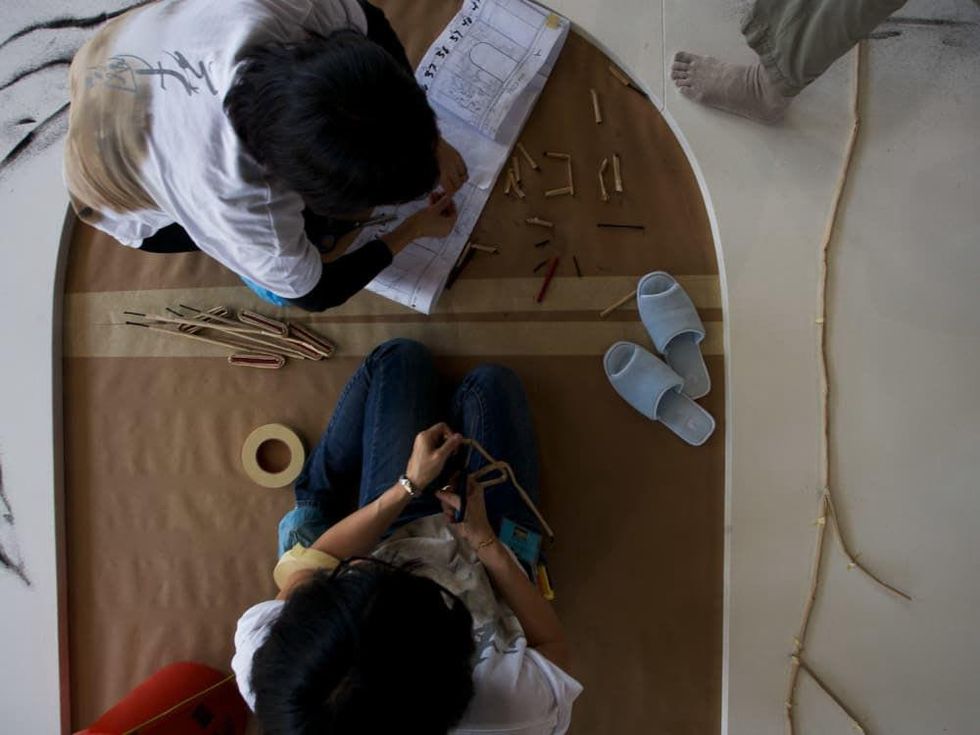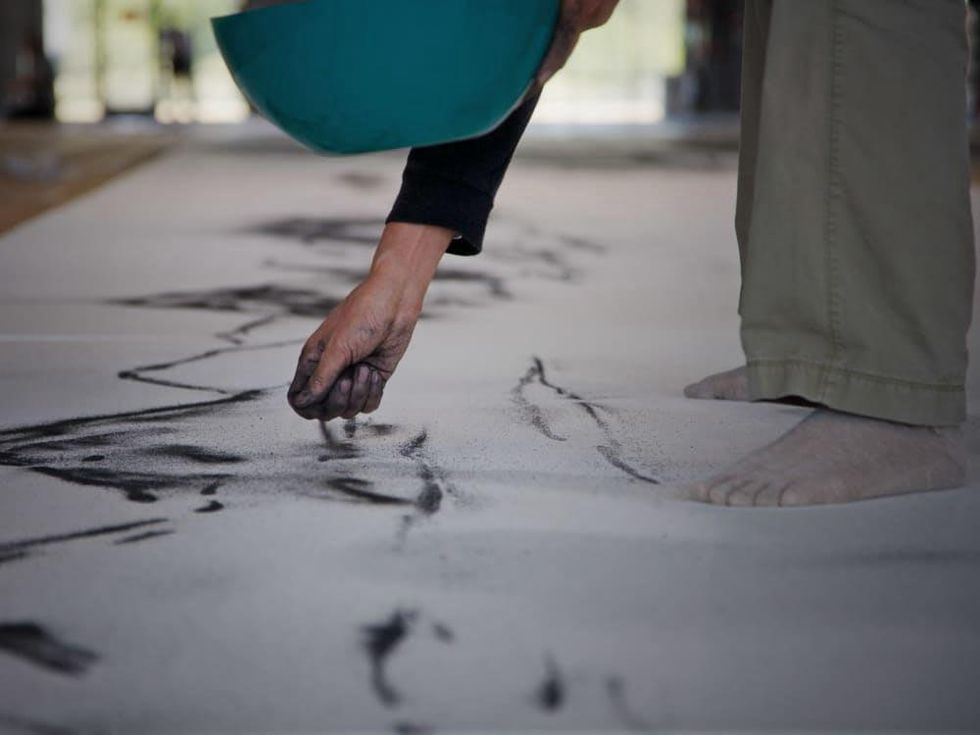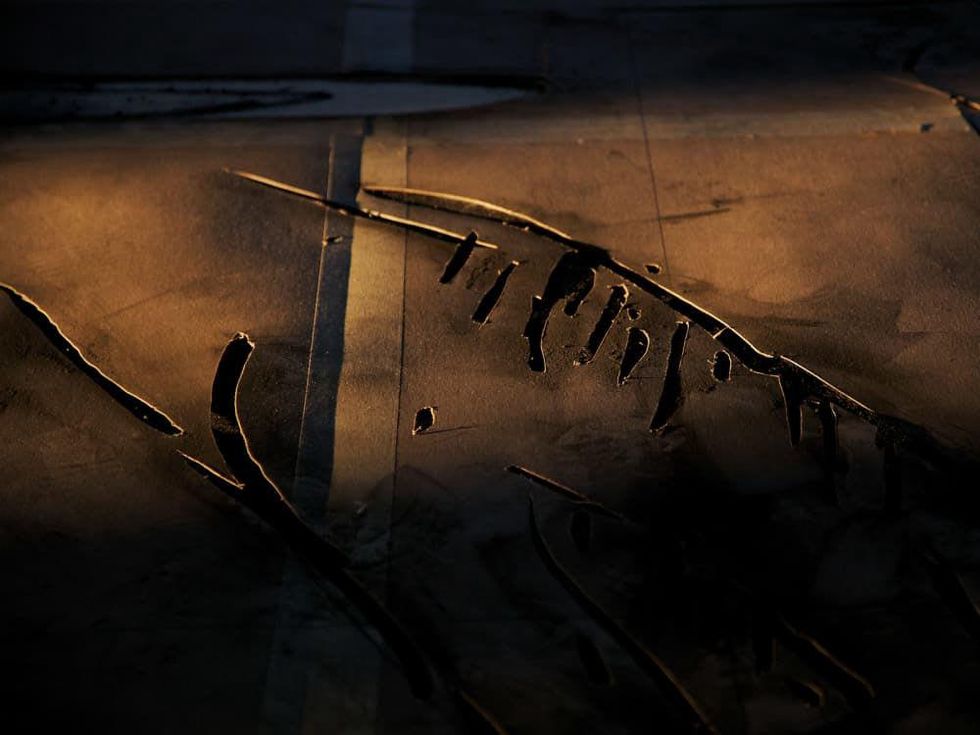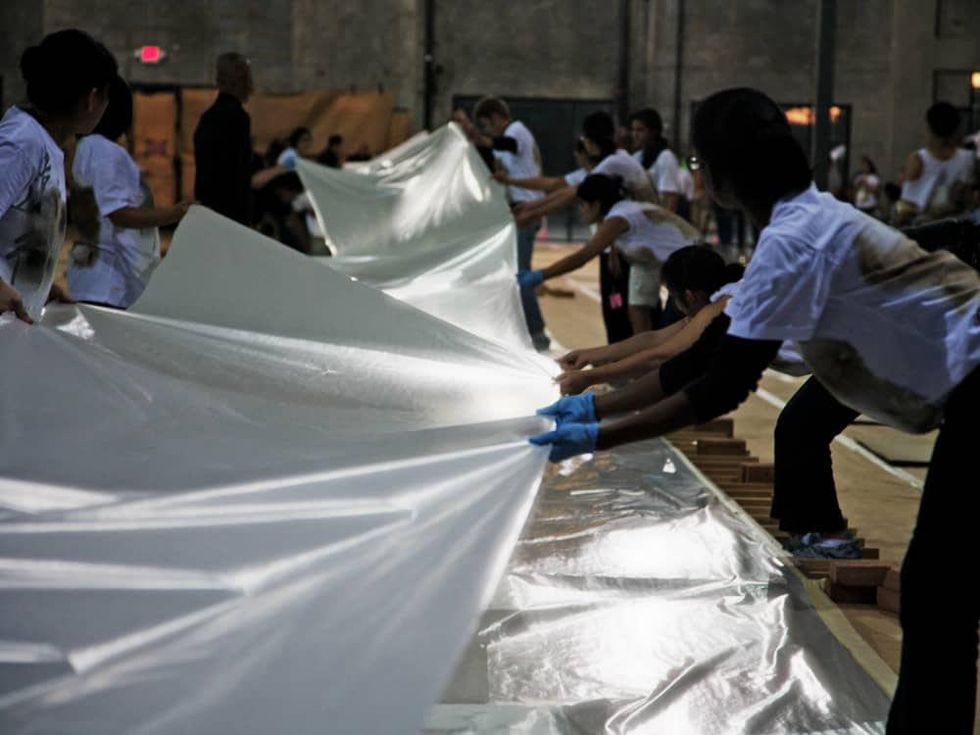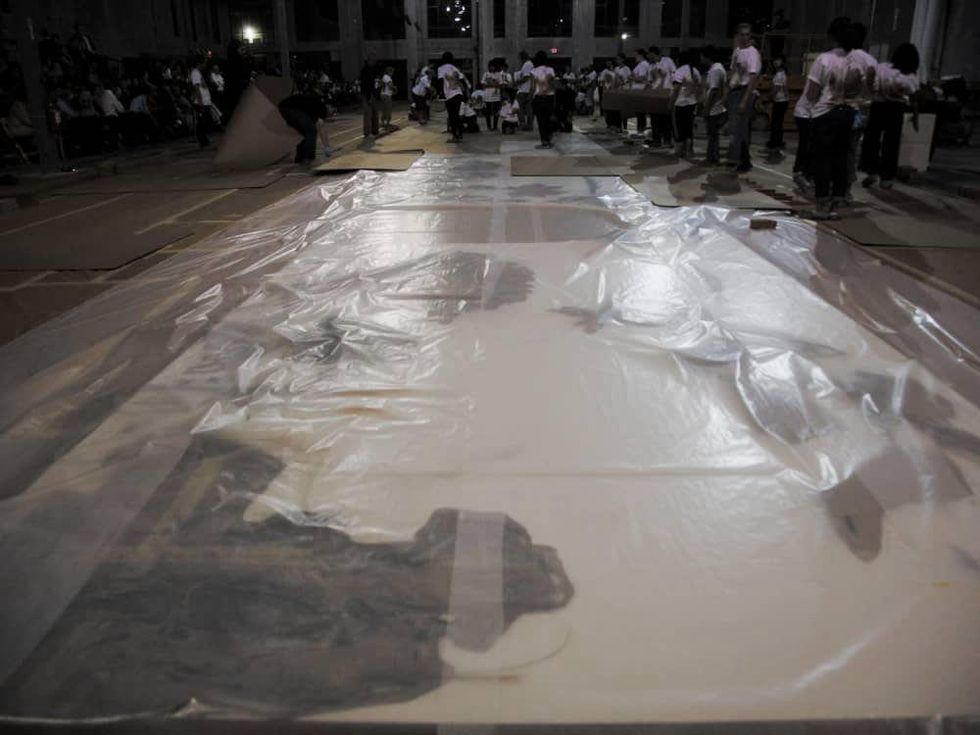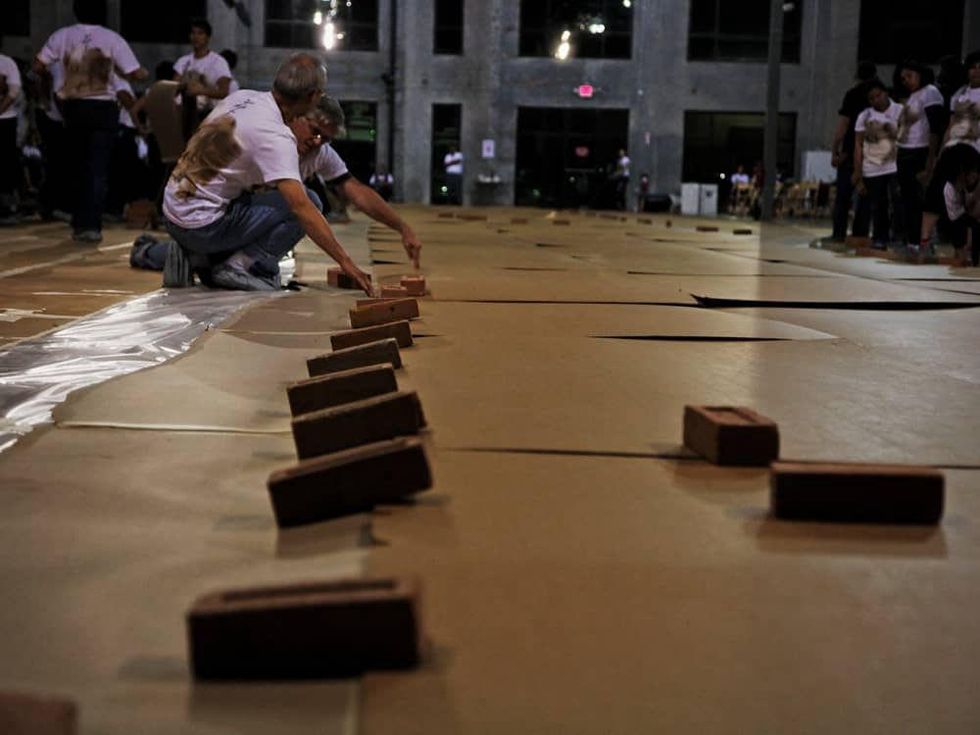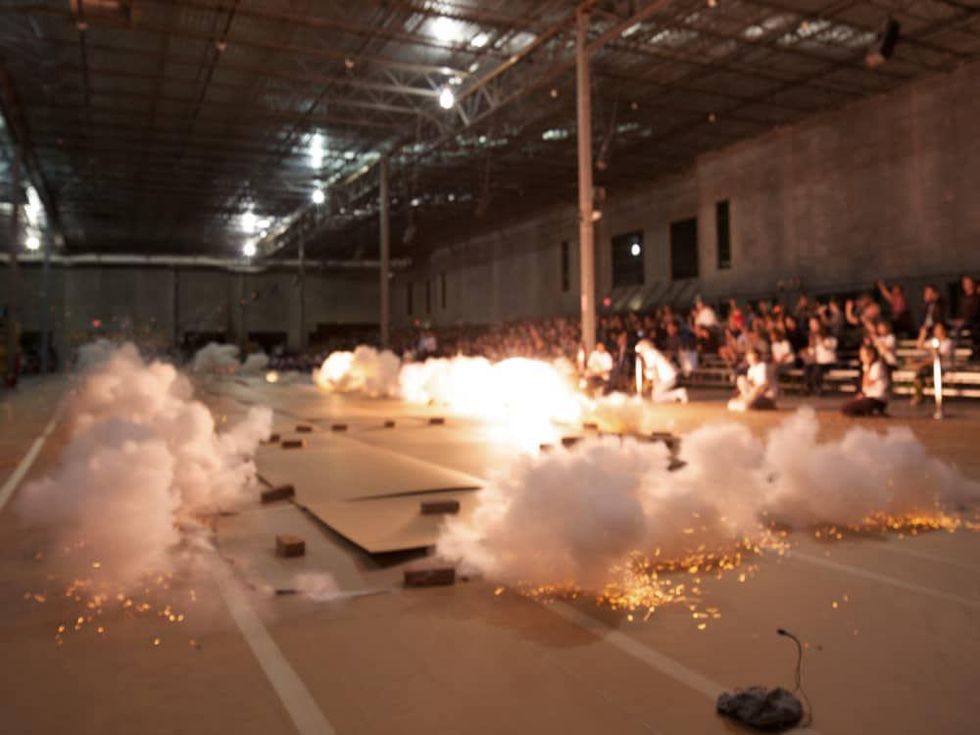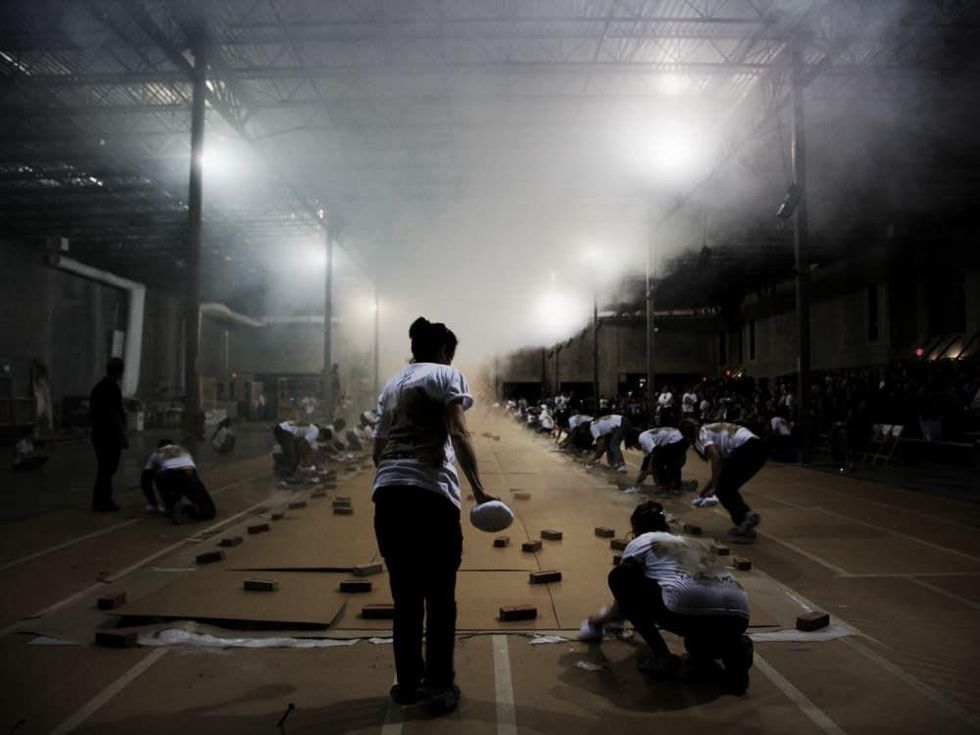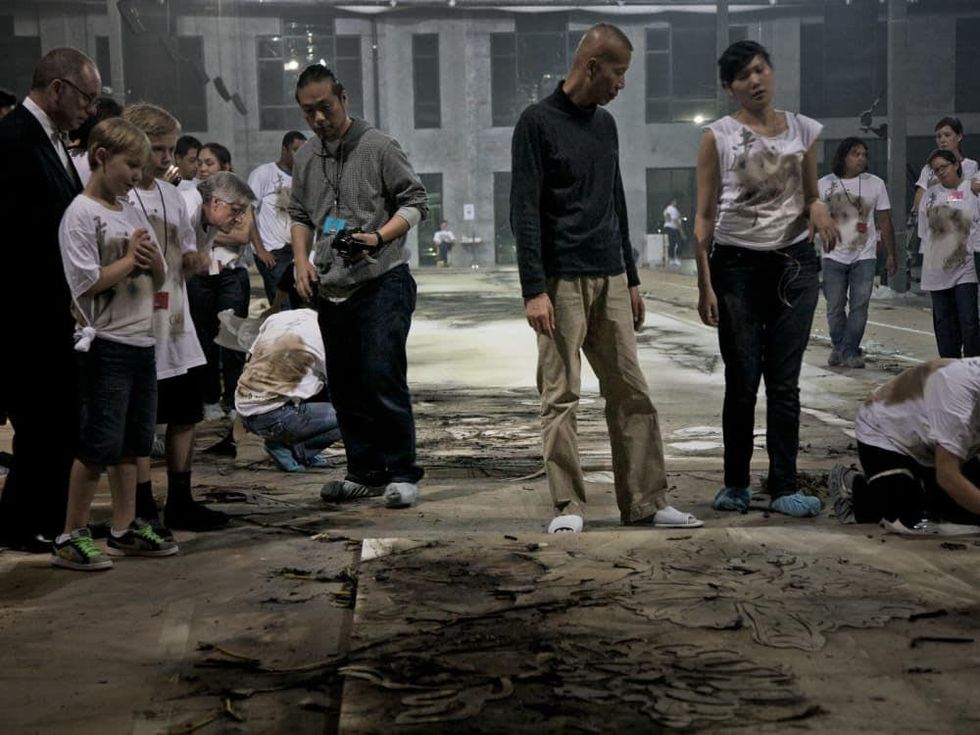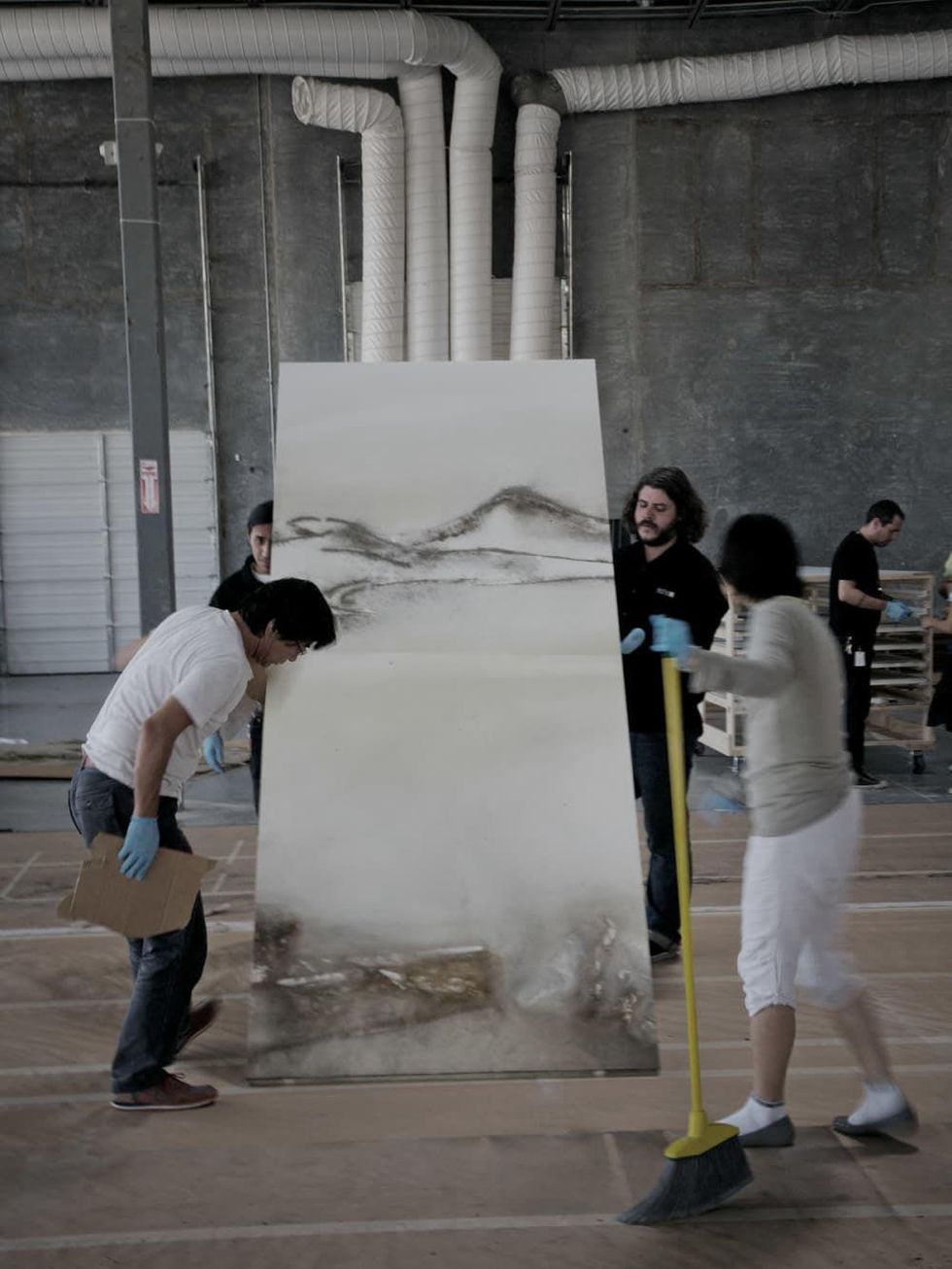lights, cameras, ignition
The buildup, the wait and the blast: Cai's Odyssey explodes as Houston watches
 The Cai explosion was dramatic and quick.Photo by Everett Taasevigen
The Cai explosion was dramatic and quick.Photo by Everett Taasevigen The smoke filled the Kirby warehouse post blast.Photo by Everett Taasevigen
The smoke filled the Kirby warehouse post blast.Photo by Everett Taasevigen Cai hoped to blow something up by 7, but it wasn't till 8 that the panels wereready for ignition.Photo by Everett Taasevigen
Cai hoped to blow something up by 7, but it wasn't till 8 that the panels wereready for ignition.Photo by Everett Taasevigen
By 6 p.m. on Wednesday, the air inside Cai Guo-Qiang's Kirby warehouse studio had become thick, as the monumental air conditioning system was given a reprieve so its blowing would not rearrange the gunpowder. Cai was making the finishing touches on his drawing, hand-pouring gunpowder across the 42 panels between bamboo and wisteria branches, anticipating the explosion that would create his permanent installation for the Museum of Fine Arts, Houston's Arts of China Gallery.
Assistants followed in unison, pushing carts of supplies, followed in turn by an assistant equipped with a broom, sweeping away excess dust. As spectators filtered onto the warehouse bleachers, a blue-gloved crew placed wood braces along the perimeter of the panels that stretch the warehouse.
In the moments leading up to the ignition, docile volunteers, following the orders of coordinator Kelly Ma, filed in to make the final arrangements of the stencils that they'd spent days detailing. Four sheets of glassine were carefully placed on the panels and braced to one another with masking tape. Next, volunteers teamed up to mate rolls of chipboard with yet more masking tape, effectively creating a massive brown grid that gave little clue as to the artwork that lay below. Blackboard-sized pieces of corrugated cardboard created a third blanket for the gunpowder.
As the clock approached 8 p.m., it became apparent that Cai was running behind schedule.
"Originally, my plan was to light up at 7 o'clock," he explained to the audience, most of them on simple metal bleachers, and those watching on CultureMap's livestream of the event. "But this drawing may be a tad too big for me — there's a lot of detail in it ... I've put a lot of thought behind the execution.
"I'm trying to be both a person of ancient times and a person of modern ages. As you can probably tell, I'm feeling very anxious and indecisive about a lot of things." He added, "I would like to thank the Museum of Fine Arts for taking such a huge risk on an artist who's not even sure of himself."
Despite his inhibitions, Cai continued to move towards the moment of ignition. Volunteers laid down bricks to further secure the layers of glassine paper. Superfluous paper along the panels' edges was torn away. The crew gathered "pom poms" — bunches of white towels for putting out any potential flames. And then the countdown began.
Volunteers and spectators alike crouched toward the ground in anticipation of the huge blast. Cai lit the fuse from the drawing's right side. In a single second, the 42 panels were lit. The rectangular outline became highlighted with the snaking fuse, followed by smoke billowing towards the ceiling as the dry scent of gunpowder permeated the studio's atmosphere. It was over in seconds.
Once the sparks dissolved, the layers obscuring the panels were removed. As the first layer of glassine peeled away, the room erupted in applause as Cai's Odyssey was revealed for the very first time.
Cai's characteristic hand is evident: the stains of sulphur, the traditional imagery, the expected sense of expansiveness. But it is the aspect of chance that makesOdyssey so enchanting.
In a post-extinction poetic moments, Cai explained: "Sometimes, as an artist, I feel like I have behind me other true artists who work. This true artist is an invisible energy and power. I both revere it as I try to control it. At the same time, I anticipate and look forward to the spontaneous effects that are out of my control.
"This is what I'm going through. It's why I've been using gunpowder all these years and would never let it go."

